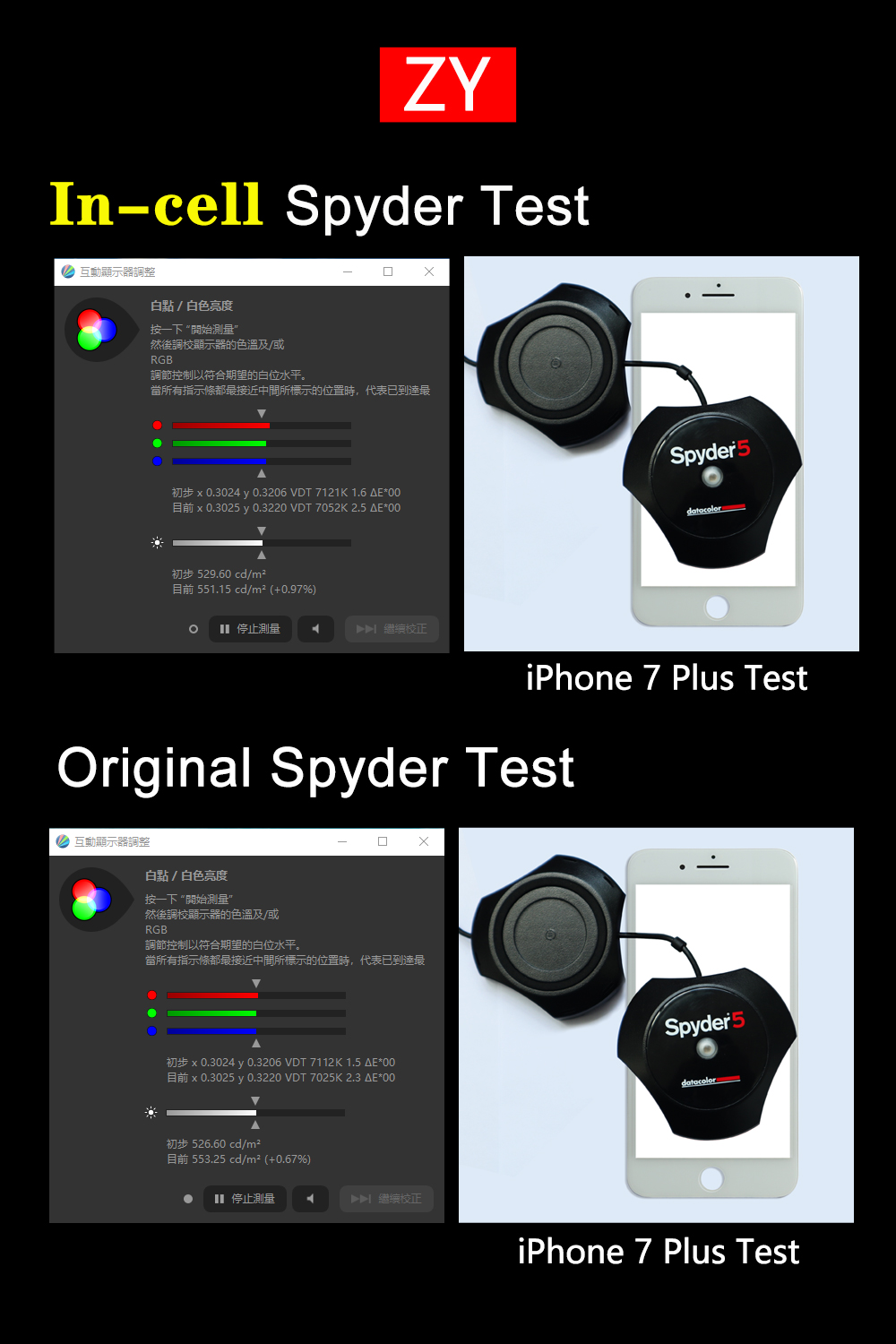
The iPhone aftermarket has four different types of iPhone x screen replacement products, including hard OLED, in-cell LCD, aftermarket LCD and soft OLED. Are you confused by the different iPhone X screens on the market? The repair price of the original iPhone X screen is equivalent to a used iPhone X, and it doesn't seem practical to choose an original screen of $ 266. Through a comprehensive and in-depth data comparison test on the iPhone x aftermarket screen, you can get the right screen replacement options.
Border adhesion test
With smooth edges, all borders fit well without adhesion failure.
Oleophobic Coating test
Water works well. However, aftermarket LCD performs relatively poorly in alcohol and n-hexane.
Screen thickness test
Due to the structural design, in-cell LCD and aftermarket LCD are relatively thick
Dimension test
All screens are suitable.
Cell phone thickness test
We can see that Aftermarket Soft OLED, Aftermarket In-cell LCD and Aftermarket LCD are relatively thick. While the other two screens are close to OEM quality.
ouch & 3D Touch & Keyboard
All perform well in touch/3D touch/keyboard test.
- Pure Color Screen Performance
Aftermarket Flexible OLED and Aftermarket Rigid OLED are relatively close to OEM New in display effect.
- Polarizer Sunglasses Test
In this test, we want to check whether the screen turns to black under sunglasses. All perform well at all angles in the polarizer test.
- Brightness & Color Temperature
Aftermarket Soft OLED and Aftermarket Hard OLED feature normal brightness. however, Aftermarket LCD feature a low brightness, which can’t meet the requirement when being used.
Now, we can draw a conclusion after the comparison test of the 6 iPhone X Screens. In-Cell LCD,Soft OLED and Hard OLED Screen of iPhone X are right choices for you.
In-cell LCD VS OLED
LCD Type
Most LCD type panels for X - XSMAX are In-Cell type panels now, which means that the digitizer is part of the main assembly vs being like older type G+G or G+G which have a secondary digitizer layer.
It's important to note that While OLED (Organic Light Emitting Diode) By nature emits its own light, LCD need to be backlit. This inherently means that a phone which was designed for an OLED panel does not have internal backlight circuitry. This in itself means that there much be backlight circuitry added. So an important thing to understand is that any aftermarket LCD meant to replace an OLED panel will have a varying degree of quality to its built-in backlight circuit, which has been known based on the flex quality and circuit quality to damage phones FPC connector.
·COF - Chip on Flex
These types of LCD displays tend to be the cheapest type of aftermarket LCD type panel they are aptly named this due to the fact that their main display driver chip which is normally housed on higher-quality original type LCD panels on the top glass near the ACT (Anisotropic Conductive Tape) This means that you will come across two major issues associated with this type of design. One is that the long thin, glass IC component will be directly on the flex cable, which can easily be damaged by a tech in normal handling and will also require a much larger surface area to house the IC. This larger surface area will radiate heat quite significantly on the lower .3rd of the screen, almost as if it were.... exactly where the keyboard sits. A major annoyance for clients who will not understand the complexity of whats going on and that technically... is normal. The heat generated also comes in part due to the backlight circuitry that has been added to this type of panel and can easily be seen with thermal optics.
·COG - Chip on Glass
These types of LCD displays are a fair bit newer... but older at the same time. I say this because it's truer to OEM tech so it's been around awhile, but it's newer to the aftermarket scene for these specific panels. While the IC is housed near the ACT making this type of panel much more resistant to accidental handling breakage. It also emits significantly less heat on the flex, unfortunately, due to the fact that as stated above, it still houses a secondary backlight circuit, you will still get excess heat emitted from the keyboard section of the display, but by my own readings, it is cut down significantly. Enough that it might not be as noticeable by the end client. Either way, neither of the LCD type panels can match an OLED in its contrast ratios or color reproduction based on the inherent technology used and how it emits light and color.
OLED Type
·Hard OLED - Hard Orangic Light Emitting Diode
These types of panels while still OLED, will not be flexible as newer FLEX AMOLED (Flexible Active Matrix Light Emitting Diode) these panels are generally cheaper, but also use older OLED tech that was prominent around the time of the S7, which was very easy to damage. These types of OLED panels also tend to have thicker borders.
·Soft OLED - Soft Orangic Light Emitting Diode
· Soft OLED panels are as close as you can currently get to OEM type panels right now, they usually have the most damage resistance and are usually within about a millimeter on the overall borders. These sometimes suffer from the dreaded "lightsaber app" where the upper glass IC area becomes damaged during improper install or through the overall defect causing a Green or Pink full brightness 2mm line down the entire display. While this is becoming less and less common. That would be the only downfall over other OLED type aftermarket displays. Soft OLED overall is the Best quality version you can currently buy and are usually preferred by customers if they can afford them. At this point.

There is a difference of about $ 50 when buying LCD or OLED. The difference between the aftermarket screen and the OEM screen is very small, and it is not worth the price difference. The higher-quality aftermarket LCD Screen seems to be enough to cope with the price difference, and the product quality as same as the iPhone 8 LCD screen and digitizer. The emergence of OLED screens can be interesting. It has the advantages of high contrast and low power consumption, but OLED burn-in and yellowing has always existed. In the Apple Aftermarket, In-cell LCD screen and digitizer replacement is a good choice.

Come to HENGWEI ye and choose what you like
Mobile screen,We create a series of high-quality mobile screens for you
